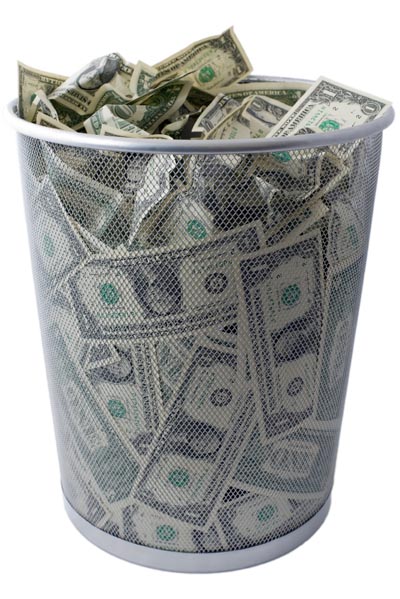 There never seems to be quite enough funding available to do the marketing you really want to do. So the money you do have needs to be used efficiently and effectively. Here are four business design strategies I’ve used with global consumer products companies that can stretch your marketing dollars further and give you more bang for your buck.
There never seems to be quite enough funding available to do the marketing you really want to do. So the money you do have needs to be used efficiently and effectively. Here are four business design strategies I’ve used with global consumer products companies that can stretch your marketing dollars further and give you more bang for your buck.
In-store merchandising (e.g., print, displays, modules, fixtures, shelf talkers, merchandisers, etc.) is fraught with waste. In fact, for two global consumer products companies I’ve worked with, over 30% of a combined merchandising spend of $350 million never reached the consumer. Using an end-to-end (E2E™) approach (“walking” the process from conceptualization to in-store where it impacts shoppers) and these four business design strategies, we were able to save 10% of that spend to be either reinvested in marketing or dropped to the bottom line.
 Identify & Eliminate Waste– Portions of the spending inefficiencies are associated with damaged or defective merchandising materials. When you conduct an E2E assessment, you’ll find waste associated with design, procurement, production, warehousing, shipping and in-store handling. Much of this waste can be eliminated by redesigning to create a lean system.
Identify & Eliminate Waste– Portions of the spending inefficiencies are associated with damaged or defective merchandising materials. When you conduct an E2E assessment, you’ll find waste associated with design, procurement, production, warehousing, shipping and in-store handling. Much of this waste can be eliminated by redesigning to create a lean system.
Identify & Minimize Non-Value Added– If it doesn’t contribute to the final quality, utility, timeliness or cost of the product, service or shopping experience and the customers or shoppers aren’t (theoretically) willing to pay for it, it’s not adding value and needs to be minimized (not all non-value added can be eliminated).
Separate Core from Context– There are some things that are core to the in-store shopper experience you’re trying to create. They are what differentiate you from the competition. Marketing dollars need to be focused on core. Everything else is context and can often be outsourced at a lower cost to vendors for whom it is core (e.g., creating and packing display modules).
Improve SKU Productivity– While companies may have the best of intentions in extending their product portfolios, there usually comes a time when SKU productivity can be significantly improved by rationalizing the tail and concentrating marketing dollars on fewer, better items.
A better business design yields better results. When the design for in-store marketing from conceptualization through to a highly impactful shopper experience is improved, a significant portion of your spend can be deployed for even greater impact.
I hope to connect with you on this subject and other great shopper marketing topics at the 2011 Shopper Insights in Action conference sponsored by IIR USA this July in Chicago. See you there.